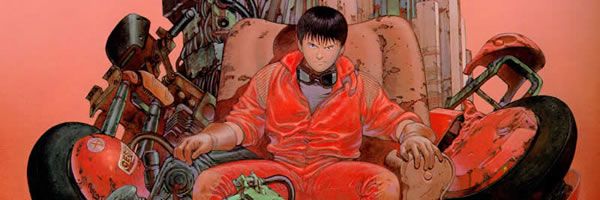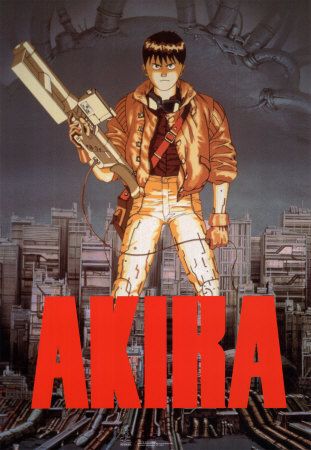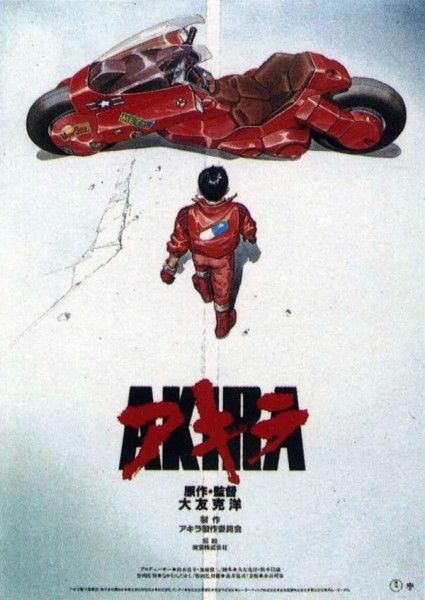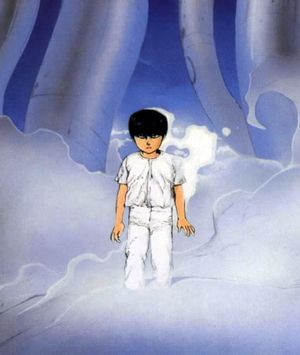A live-action feature film adaptation of the popular manga Akira has been a long time coming, but thus far has yet to come to fruition. After a prolonged development process, the film was finally beginning to move into pre-production at Warner Bros. in 2011 with Garrett Hedlund cast as Kaneda and the studio in various stages of negotiations with Kristen Stewart, Gary Oldman, and Helena Bonham Carter for roles. However, the studio subsequently halted production on the Jaume Collet-Serra-directed film in early 2012, citing their desire for more script work to be done. The project appears to have now sunk back into development hell, as we haven’t heard a solid update regarding WB’s Akira in over a year.Steve recently sat down with screenwriter Gary Whitta in anticipation of the release of the upcoming sci-fi film After Earth, and during the course of their conversation Whitta talked at length about his work on Akira. As one of the first screenwriters on the film, Whitta revealed his intriguing location change for the film that attempted to solve the issue of “Americanizing†the story, the difficulty of getting the movie made, and more. Hit the jump to read on. 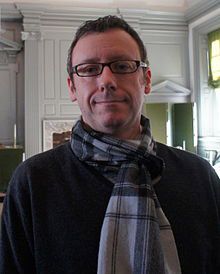 Speaking with Steve, Whitta talked about his involvement with the Akira film and why it was so difficult to get it off the ground:
Speaking with Steve, Whitta talked about his involvement with the Akira film and why it was so difficult to get it off the ground:
“I worked on it for about six months. And I pretty much lived on the lot with the director at the time, Ruairi Robinson, trying to work out that movie. It’s a tough movie; it’s hard to figure out how to do it below an R-rating. It’s a difficult movie, which deals with very mature subject matter; it’s hardcore.â€
In addition to the rating issue, Whitta said that another difficulty in adapting the manga was how to deal with the Americanization of the story:
“We always dealt with the problem of, [and] I think what a lot of the fans felt was problematic, was the westernization of it; [it’s like] “they’re never going to make the $100 million movie with an all-Japanese cast. You need to westernize it.†And that almost became kind of a joke—like, the idea of Shia LaBeouf as Tetsuo or whatever. People are going to have a hard time with that, and certainly the fans.â€
n order to solve the problem of "westernizing" the film without completely throwing out the Japanese setting, Whitta came up with a rather fascinating solution that involved altering the story’s location quite drastically:
“We came up with an idea that I actually thought was really cool; I don’t know if it survived into future versions. It’s not New Manhattan—because that was the [initial] idea, right? They moved it in to New Manhattan. I said, ‘it’s not New Manhattan, it’s still New Tokyo but—this is going to sound weird—it’s actually in Manhattan.’ What we did was, the idea is that there’d been a massive economic crash in the United States and in our desperation, we sold Manhattan Island to the Japanese, who were becoming a very powerful economic force, and they were having an overpopulation problem, because Japan is a series of islands, it can only accommodate so many people. So they just bought Manhattan Island, and it became the fifth island of Japan, and they populated it. It became New Tokyo, and it was just off the coast of the United States. So it was Japanese territory, it wasn’t New Tokyo, but there were Americans who kind of lived in little Americanized quarters of it. I felt it was a way to do a kind of cool Western-Eastern fusion of the two ideas; not fully Japanese, not fully westernized. Whether or not you’ll ever see that version, I don’t know, but I thought that was kind of a cool solution to that problem of westernization of a Japanese concept.â€
A number of screenwriters worked on Akira after Whitta, so as he said there’s no telling whether his “New Tokyo†idea survived in subsequent drafts, but it’s definitely a different kind of direction for the story. Read the full transcript of what Whitta had to say about Akira below, and look for Steve’s complete interview with Whitta on Collider soon.
Collider: What was your experience like working on Akira?
GARY WHITTA: I worked on it for about six months. And I pretty much lived on the lot with the director at the time, Ruairi Robinson, trying to work out that movie. It’s a tough movie; it’s hard to figure out how to do it below an R-rating. It’s a difficult movie, which deals with very mature subject matter; it’s hardcore. I hope they figure out how to make it. My experience on it… I’ll just say I learned a lot about the realities of studio filmmaking. My friend Albert Hughes was on it after me; and they’ve had numerous writers come and go. Some movies are just trickier to crack than others, and I hope they crack it, because I would love to see them get it right. But I understand why it’s difficult.
Well, it’s one of those things where, if it could be made for $50 million, then of course they could do an R. But it’s at least $100 million to make, and maybe even $150 million.
WHITTA: I’ll give you a little something that’s actually never been spoken about before. How interesting it is, I’ll let you decide. But we always dealt with the problem of, [and] I think what a lot of the fans felt was problematic, was the westernization of it; [it’s like] “they’re never going to make the $100 million movie with an all-Japanese cast. You need to westernize it.†And that almost became kind of a joke—like, the idea of Shia LaBeouf as Tetsuo or whatever. People are going to have a hard time with that, and certainly the fans.
So we came up with an idea that I actually thought was really cool; I don’t know if it survived into future versions. It’s not New Manhattan—because that was the [initial] idea, right? They moved it in to New Manhattan. I said, it’s not New Manhattan, it’s still New Tokyo but—this is going to sound weird—it’s actually in Manhattan. What we did was, the idea is that there’d been a massive economic crash in the United States and in our desperation, we sold Manhattan Island to the Japanese, who were becoming a very powerful economic force, and they were having an overpopulation problem, because Japan is a series of islands, it can only accommodate so many people. So they just bought Manhattan Island, and it became the fifth island of Japan, and they populated it. It became New Tokyo, and it was just off the coast of the United States. So it was Japanese territory, it wasn’t New Tokyo, but there were Americans who kind of lived in little Americanized quarters of it. I felt it was a way to do a kind of cool Western-Eastern fusion of the two ideas; not fully Japanese, not fully westernized. Whether or not you’ll ever see that version, I don’t know, but I thought that was kind of a cool solution to that problem of westernization of a Japanese concept.
Either way, expensive as hell to bring to the screen…
WHITTA: How do you do it? I think rather than try to figure out how you do an R movie for a number, it was more about “Let’s get it to a PG-13 and then we can spend the money we need to make.†But that has its own problems. Again, I would love to see them make it; I have all the good will in the world for that movie. I understand why it’s been difficult for the studio to make a movie that they feel can be true to the subject matter but also economically make sense for them.
It’s so tricky because you and I understand what’s going on. But the average person who doesn’t really understand how movies are made is like “This is a no-brainer.†But the fact is, the rating equals how much money you can spend. It’s just statistics…
WHITTA: And sometimes it’s just not the right time. I always feel like, when you’ve got a piece of material, it will always find a way to get made. Movies are dead for a long time, and then they come back and they find the right time for them. One of the difficulties when I was working on Akira is that Watchmen was coming out around that time. It came out, and it wasn’t a huge hit. It was successful, but I don’t think it was what the studio hoped it would be. And it’s a similar thing, right? Difficult, mature graphic novel that’s not Superman; it’s something only the fans really know about. New York gets destroyed, it’s very uncompromising. And I think they looked at that and said, “Well, why would we want to do exactly that again?†I think that was part of what complicated it.
So, like I said, I had a great time working on it. I got to sit in rooms where we got to design the bike, and you have those days where you’re like, “You know what? This is why this is still the coolest job in the world.†Even with all the aggravation and all the frustrations that you have, you get to sit around and say, “What does Kaneda’s bike look like in this version of the movie?†And we had the concepts, we built some of the models and it’s like, this still a badass job to do.
Look for our full interview with Whitta soon.

